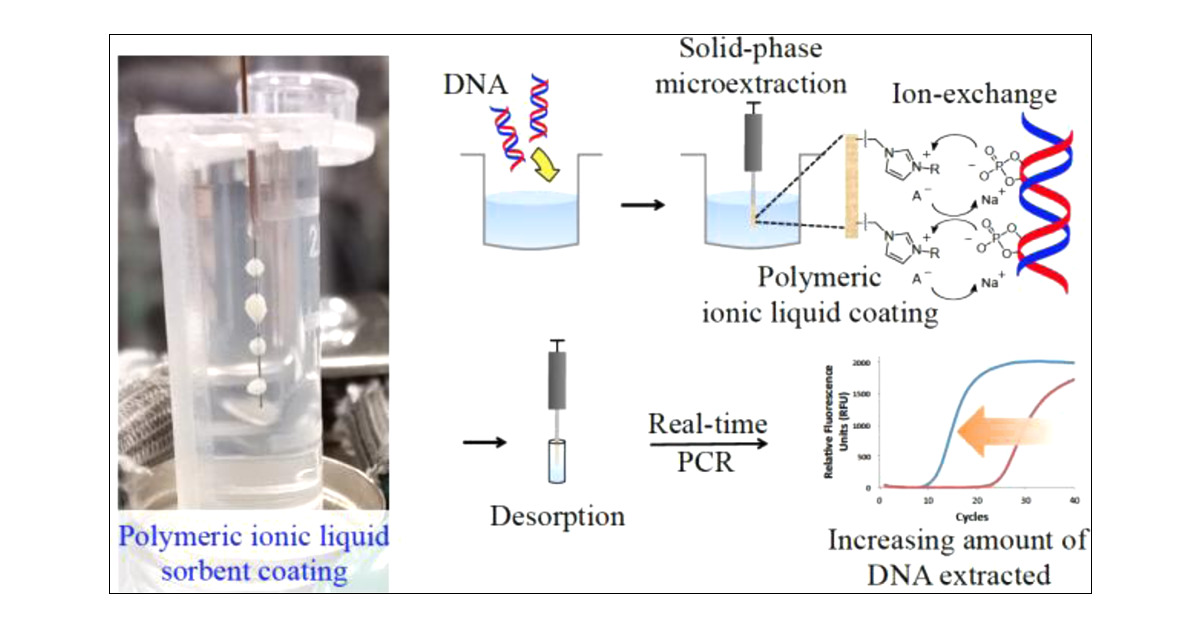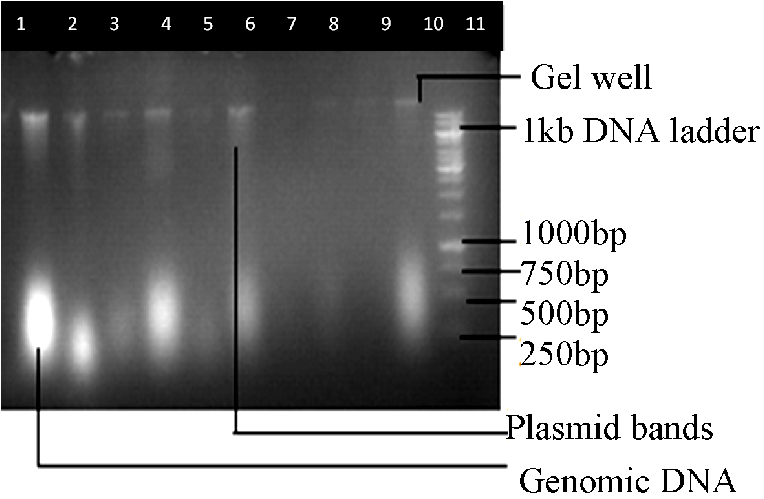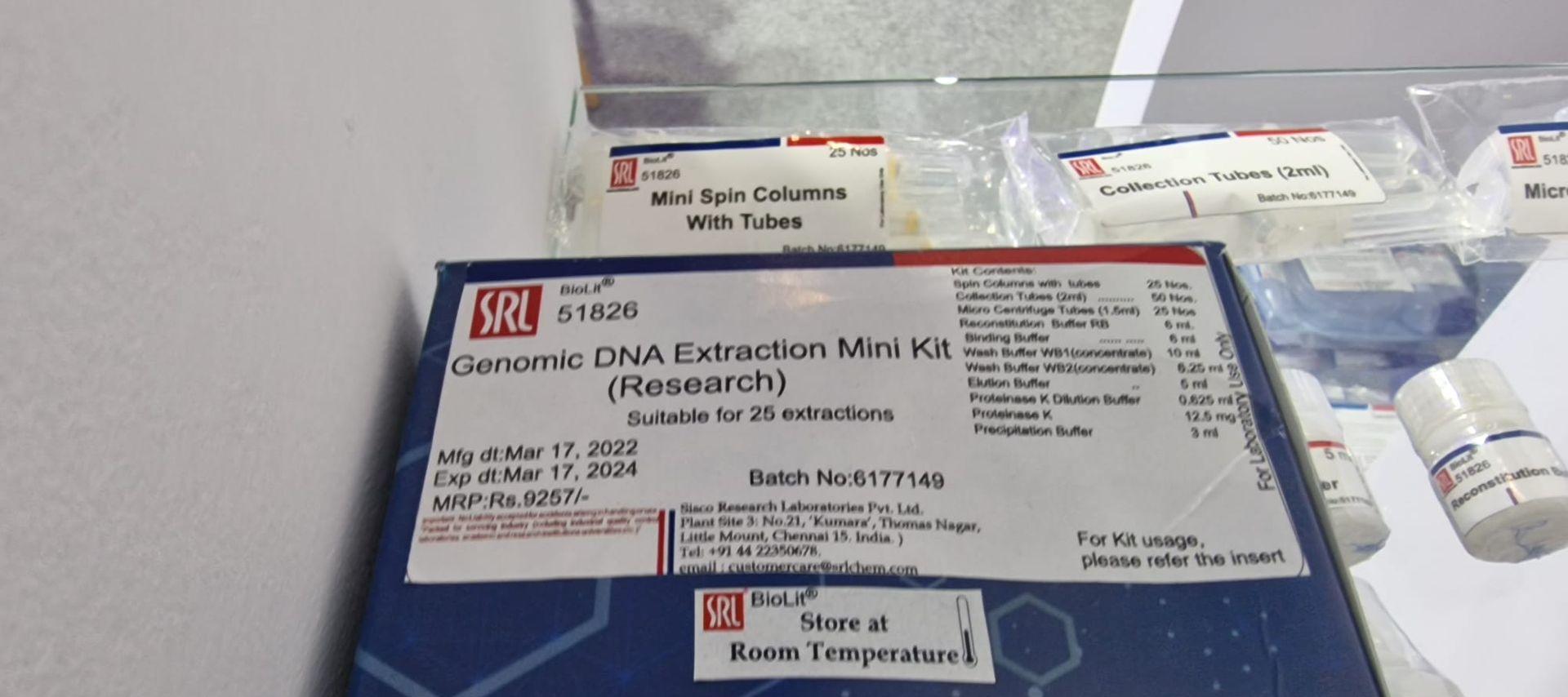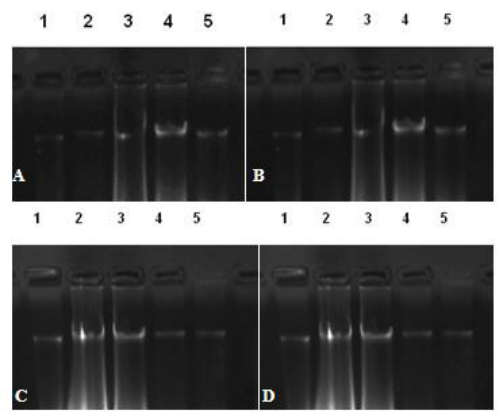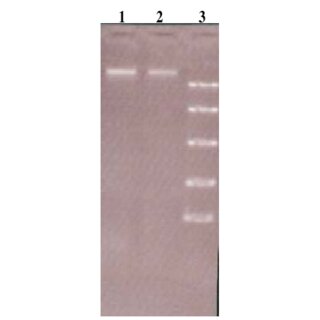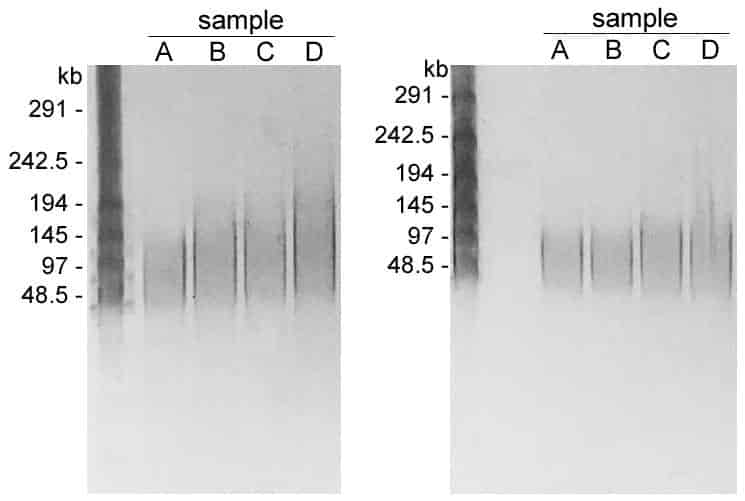DNA & Protein Tools and Kits: Empowering Molecular Biology Research
Embark on groundbreaking molecular biology research with our comprehensive collection of DNA and protein tools and kits. Discover innovative solutions for DNA extraction, purification, amplification, and protein analysis, tailored to meet your specific research needs.
Genomic DNA Extraction (from Bacteria) Kit (Teaching)
The Genomic DNA Extraction Kit (Teaching) offers an exemplary solution for instructive purposes, providing an effective and educational platform for students to comprehend the essential techniques involved in isolating genomic DNA from bacteria. This kit is meticulously designed to serve as an invaluable educational tool, offering a hands-on experience in the fundamental process of genomic DNA extraction, a cornerstone in molecular biology studies.
The step-by-step protocol included in the kit is tailored to guide students through the procedure with clarity and precision, fostering a deeper understanding of the principles behind DNA extraction. The kit employs user-friendly methodologies, making it suitable for learners at various levels of expertise, from beginners to advanced students. The emphasis on teaching ensures that students not only obtain high-quality genomic DNA but also gain insights into the theoretical underpinnings of the extraction process.
Key features of the Genomic DNA Extraction Kit (Teaching) include its efficiency in extracting DNA from bacterial samples, providing a tangible link between theoretical knowledge and practical application. The kit also promotes a safe laboratory environment, incorporating measures for handling potentially hazardous materials in an educational setting.
By integrating this teaching kit into molecular biology and biotechnology curricula, educators can enhance the educational experience, empowering students with the skills and knowledge crucial for future scientific endeavors. The Genomic DNA Extraction Kit (Teaching) thus serves as an instrumental resource, equipping the next generation of scientists with a solid foundation in genomic DNA extraction techniques.
Specifications
- Agarose Gel Electrophoresis: Extracted DNA's molecular size is compared with a High range DNA marker.
- DNase Activity: None detected
- A260/A280: 1.6-1.9
- Stability: Stable for one year
Description
The primary objective of this kit is to isolate chromosomal DNA from bacterial cells. The cells are first resuspended in an appropriate buffer that minimizes nuclease activity. This buffer is then used to rupture the cells and release their contents. Next, RNase A is introduced to eliminate any contaminating RNA. Finally, the nucleic acid is precipitated in a water-alcohol mixture containing a high concentration of inorganic salt.
Includes
- Bacterial Cell Pellet - 18 vials
- SE Buffer with RNase A - 5 ml
- 20% SDS - 200 µl
- 2.5 M KCl - 200 µl
- Buffer Saturated Phenol - 4 ml
- Chloroform - 5 ml
- DNA Precipitation Solution - 14 ml
- Wash Solution - 15 ml
- TE Buffer - 500 µl
- Agarose - 0.5 g
- Ethidium Bromide - 30 µl
- 6X Gel Loading Dye - 100 µl
- Control DNA (200 ng/10 µl) - 60 µl
- 50X TAE Buffer - 25 ml
Furthermore, the Genomic DNA Extraction Kit (Teaching) offers a comprehensive learning experience by incorporating real-world applications and industry-standard techniques. The included reagents are carefully selected to ensure reliability, reproducibility, and optimal yield of genomic DNA, providing students with a genuine insight into the principles and challenges encountered in laboratory research.
The kit's versatility extends to its adaptability for various bacterial strains, allowing students to explore the nuances of genomic DNA extraction from different microbial sources. This adaptability aligns with the diverse nature of bacterial genomes and reinforces the importance of method optimization for specific organisms.
To enhance the educational value, the Genomic DNA Extraction Kit includes supplementary materials such as instructional videos, theoretical background information, and troubleshooting guides. These resources empower educators to facilitate a dynamic and interactive learning environment, fostering critical thinking and problem-solving skills among students.
Moreover, the Genomic DNA Extraction Kit is designed to accommodate both individual and group learning settings, promoting collaborative efforts and facilitating peer-to-peer knowledge exchange. This collaborative aspect mirrors the teamwork often required in professional laboratory settings, preparing students for future research endeavors.
In summary, the Genomic DNA Extraction Kit (Teaching) not only demystifies the complexities of genomic DNA extraction but also instills a profound appreciation for the significance of this foundational technique in molecular biology. As an educational tool, it equips students with practical skills, theoretical knowledge, and a holistic understanding of genomic DNA extraction processes, paving the way for a seamless transition from classroom learning to real-world applications in the scientific community.
General Information
- Storage: Components are stored at various temperatures ranging from room temperature to -20°C.
- Shelf Life: 6 months
- IMDG Identification: Not regulated for transport (Non-hazardous)
- HSN Code: 15 expt. Kit, 38229090 (GST 12%)
- Available Packages: 15 expt. Kit
Genomic DNA Extraction (from Bacteria) Kit (Teaching)
A Comprehensive Solution for Bacterial Genomic DNA Isolation
This comprehensive Genomic DNA Extraction Kit (Teaching) provides all the reagents and materials necessary to isolate high-quality genomic DNA from a variety of bacterial cultures. The kit is designed for educational purposes, making it an ideal tool for teaching students the principles of molecular biology and genomic DNA extraction techniques.
Specifications
Agarose Gel Electrophoresis
- Molecular Size Comparison: Extracted DNA fragments are compared to a high-range DNA marker to determine their molecular size.
DNase Activity
- DNase Absence: The absence of DNase activity ensures that the extracted DNA is not degraded during the isolation process.
A260/A280 Ratio
- DNA Purity Assessment: The A260/A280 ratio of the extracted DNA falls within the range of 1.6-1.9, indicating high purity and minimal contamination.
Stability
- Long Shelf Life: The extracted DNA remains stable for one year under proper storage conditions.
Description
The Genomic DNA Extraction Kit (Teaching) provides a comprehensive approach to isolating chromosomal DNA from bacterial cells. The process begins with resuspending the cells in a suitable buffer to minimize nuclease activity and prevent DNA degradation. Subsequently, the cells are ruptured to release their cellular contents, including the chromosomal DNA. To remove contaminating RNA, RNase A is introduced, specifically targeting RNA molecules. Finally, the nucleic acid is precipitated using a water-alcohol mixture in the presence of a high concentration of inorganic salt, effectively isolating the chromosomal DNA.
Kit Components
- Bacterial Cell Pellet (18 vials)
- SE Buffer with RNase A (5 ml)
- 20% SDS (200 µl)
- 2.5 M KCl (200 µl)
- Buffer Saturated Phenol (4 ml)
- Chloroform (5 ml)
- DNA Precipitation Solution (14 ml)
- Wash Solution (15 ml)
- TE Buffer (500 µl)
- Agarose (0.5 g)
- Ethidium Bromide (30 µl)
- 6X Gel Loading Dye (100 µl)
- Control DNA (200 ng/10 µl) (60 µl)
- 50X TAE Buffer (25 ml)
General Information
Storage
The components of the Genomic DNA Extraction Kit (Teaching) are stored at various temperatures ranging from room temperature (RT) to -20°C. This ensures the stability and integrity of the reagents throughout their shelf life.
Shelf Life
Under proper storage conditions, the kit has a shelf life of six months. This allows for ample time for instructors and students to utilize the kit for teaching and experimentation.
IMDG Identification
The Genomic DNA Extraction Kit (Teaching) is classified as "Not Regulated for Transport" (Non-Haz) by the International Maritime Dangerous Goods (IMDG) Code. This means that the kit does not pose any significant safety hazards during transportation and can be shipped without special precautions.
HSN Code
The Harmonized System (HS) Code for the Genomic DNA Extraction Kit (Teaching) is 15 expt. Kit, 38229090 (GST 12%). This code identifies the kit as a scientific or laboratory kit used for educational purposes.
Genomic DNA Extraction (from Bacteria) Kit (Teaching) is a kit designed to provide students with hands-on experience in extracting genomic DNA from bacteria. The kit includes all the necessary reagents and materials for performing the experiment, as well as a detailed protocol.
Kit Components
The kit typically includes the following components:
- Bacterial culture
- Lyophilized bacterial cells
- Solution A (lysis buffer)
- Solution B (ethanol)
- Solution C (RNAse A)
- Solution D (washing buffer)
- Solution E (elution buffer)
- Microcentrifuge tubes
- Spin columns
- Collection tubes
- Pipettes
- Pipette tips
- Microwaves tubes
Protocol
The protocol for extracting genomic DNA from bacteria typically involves the following steps:
- Cell lysis: The bacterial cells are lysed using Solution A, which contains a detergent that breaks down the cell membrane.
- Protein precipitation: Cellular proteins are precipitated using Solution B, which is an organic solvent.
- RNAse A treatment: RNA is degraded using Solution C, which contains RNAse A, an enzyme that breaks down RNA.
- DNA binding: DNA is bound to a spin column using Solution D, which contains a chaotropic salt that promotes DNA binding to the silica membrane in the spin column.
- Washing: The spin column is washed with Solution D to remove impurities.
- Elution: DNA is eluted from the spin column using Solution E, which contains a buffer that elutes DNA from the silica membrane.
- Quantitation: The concentration of the extracted DNA is quantified using a spectrophotometer or fluorometer.
Applications
Genomic DNA extracted from bacteria can be used for a variety of applications, including:
- Polymerase chain reaction (PCR): PCR is a technique used to amplify a specific region of DNA. Genomic DNA can be used as a template for PCR to amplify genes or other regions of interest.
- Restriction enzyme digestion: Restriction enzymes are enzymes that cut DNA at specific sequences. Genomic DNA can be digested with restriction enzymes to create fragments of DNA that can be used for further analysis.
- Southern blotting: Southern blotting is a technique used to detect specific DNA sequences. Genomic DNA can be digested with restriction enzymes and then transferred to a membrane. The DNA on the membrane can then be hybridized with a labeled probe that is complementary to the DNA sequence of interest.
Benefits of Using a Teaching Kit
There are several benefits to using a teaching kit for extracting genomic DNA from bacteria:
- Convenience: The kit includes all the necessary reagents and materials, so there is no need to order or prepare individual components.
- Reproducibility: The protocol is standardized, so the experiment can be easily repeated.
- Safety: The kit includes all the necessary safety precautions.
- Cost-effectiveness: The kit is a cost-effective way to provide students with hands-on experience in extracting genomic DNA from bacteria.
Overall, Genomic DNA Extraction (from Bacteria) Kit (Teaching) is a valuable tool for teaching students about the basic principles of molecular biology.
